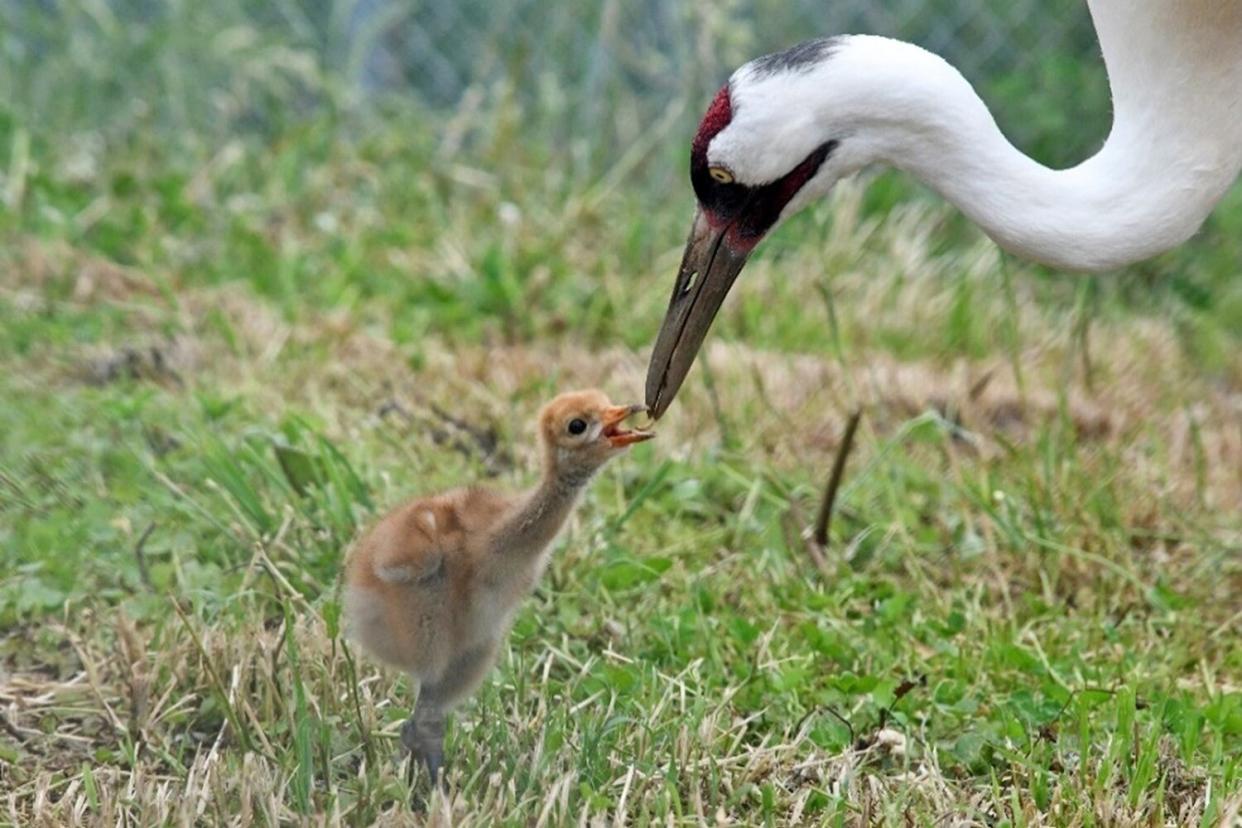Rare Endangered Whooping Crane Hatches at Virginia Conservation Institute

Chris Crowe, Smithsonian Conservation Biology Institute
For the first time, a whooping crane chick has hatched at the Smithsonian Conservation Biology Institute (SCBI) in Front Royal, Virginia.
On Friday, the Virginia facility announced that the whooping crane, which is one of the most endangered species of crane in the world, hatched on May 26 and has been "thriving" ever since.
The International Crane Foundation and Necedah National Wildlife Refuge found the egg abandoned in a wild nest in Wisconsin and passed the discovery on to SCBI, so the institute's bird team could take the arriving crane under its wing.
SBCI's 16-year-old female whooping crane Tehya and its 25-year-old male whooping crane Goliath served as surrogate parents for the chick and have been "protective and attentive to its needs" both inside the egg and out.
Never miss a story — sign up for PEOPLE's free daily newsletter to stay up-to-date on the best of what PEOPLE has to offer, from juicy celebrity news to compelling human interest stories.
Tehya and Goliath recently bred and produced two eggs of their own, but both were infertile.
"As part of the Whooping Crane Reintroduction Partnership, the Association of Zoos and Aquariums' Species Survival Plan (SSP) for Whooping Cranes selected Tehya and Goliath as the surrogate parents because the wild egg was laid around the same time as the pair's infertile eggs, so the incubation period aligned," SCBI shared in a release. "While keepers awaited the arrival of the wild egg, they discarded the infertile eggs and provided Tehya and Goliath with a fake egg so they could continue to practice their natural parenting behaviors."
"Just prior to hatch, keepers switched Tehya and Goliath's fake egg for the fertile one," the statement continued. "When the colt hatched, both parents immediately began caring for it. Keepers and veterinarians are allowing the family to bond without interference."
The baby crane will get its first veterinary exam at five weeks old, and SCBI will confirm its sex after taking a DNA sample. SCBI's team will monitor the chick closely to ensure it stays healthy and alert.
Whooping cranes are endangered due to habitat destruction, hunting, poaching, climate change, natural disasters, and oil spills. The species declined to about 22 birds in 1941, but with conservation efforts, numbers have risen to about 700 in the wild and 140 in human care, according to SCBI.

